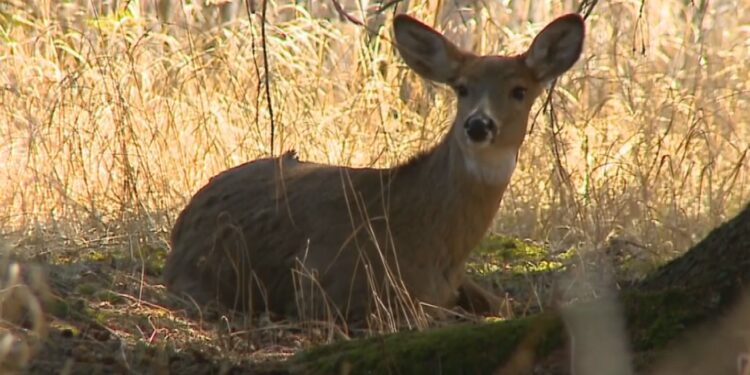UPPER PENINSULA, Mich. (WZMQ) – This week, the Michigan DNR reported the discovery of chronic wasting disease—also known as CWD—among deer in a new Michigan County. While that case was downstate in Genesee, the disease has also previously been identified in the Upper Peninsula.
As hunters prepare for deer season, the Michigan Department of Natural Resources (DNR) is offering advice and resources to help them do their part to slow the spread of CWD.
“Our bodies have normal proteins in them—all animals do—and when they become misfolded or abnormal, they turn into what’s called a prion,” explained Melinda Cosgrove, a laboratory scientist manager for the DNR Wildlife Health section. “The prion is what is infectious in these animals and then eventually starts to cause some neurological deterioration in the animal.”
Since 2015, chronic wasting disease has been found in wild deer in 16 Michigan counties, including Dickinson County. While the disease is typically transmitted from deer to deer, the DNR is concerned about human-assisted movement contributing to new cases.
“Movement of carcasses from one hunting area to another, that can assist a more rapid pace across the state as well,” Cosgrove said. “We have seen it really in and around the central to southwest part of the Lower Peninsula, and then we’ve seen some periodic cases starting to come out from there.”
To keep track of the spread, the State has set up a rotational focused testing system.
“We’re trying to get a baseline of data across the state so we can have confidence that we’re not missing any big hot spots out there,” said Cosgrove. “In those areas, hunters can drop off the head of their deer. We have dropboxes available or some of our wildlife field offices have places where they can drop those off. In the remaining areas of the state, we have self-submission kits. Hunters can remove lymph nodes, and it comes with an envelope for overnight mailing. They go straight to the testing lab, and they can get no-cost testing.”
CWD often causes deer to lose weight. They can become lethargic and easy to approach, and many have been seen drinking water continuously. However, a lack of symptoms does not necessarily mean that a deer is healthy.
“Symptoms can take 16 to 18 months to show up,” Cosgrove said. “I’ve talked to a lot of hunters who have hunted a nice, healthy-looking buck and are surprised when it comes back as CWD positive just because it hasn’t gotten to the point where it’s developed symptoms yet.”
Currently, there have been no cases of chronic wasting disease transferring to humans. Still, the DNR advises against consuming diseased meat.
“In the cases where hunters do have their deer tested, if it comes back as CWD positive, we do offer those hunters a free antlerless replacement tag,” said Cosgrove. “That’s for the meat replacement. They can keep the antlers of it, but we are really just interested in helping them be able to go get more meat if they’re interested in that.”
According to the DNR, one of the best CWD tracking tools is human reporting of sick or dead animals. Cosgrove also encourage certain precautions when harvesting deer, whether they have chronic wasting disease or not.
“Always wearing gloves when you’re field dressing deer is good,” she said, “and then disposing of any parts or the remaining carcass properly, like bagging it and sending it to a landfill versus leaving it on the landscape where other animals can come in contact with it.”
To learn more about chronic wasting disease in Michigan and available testing services, click here. Hunters who see a deer that appears to be sick can call a DNR field office or lab or visit dnr.state.mi.us to report it.


















